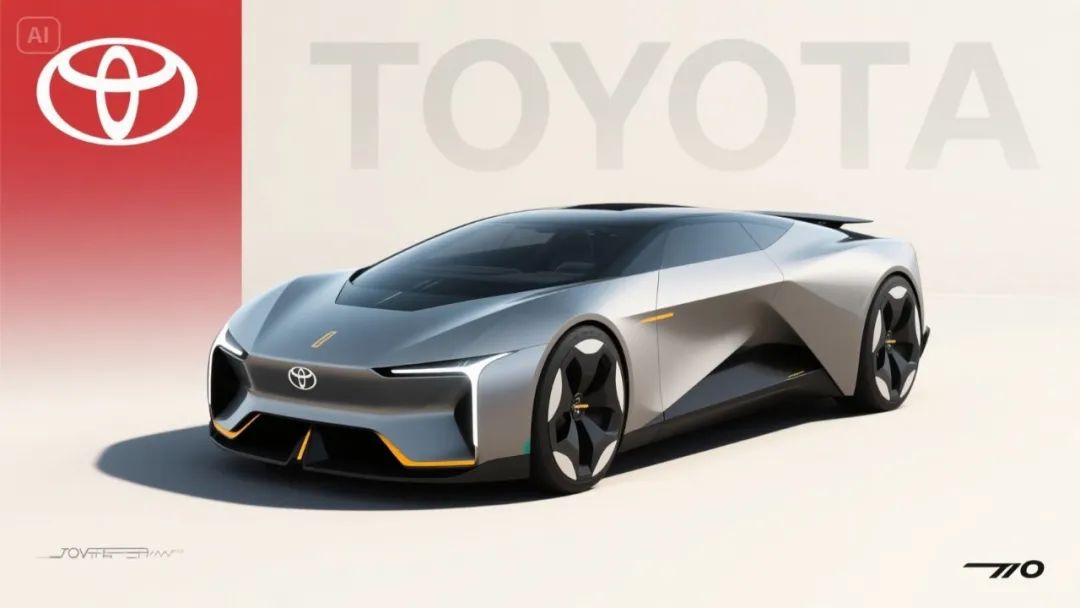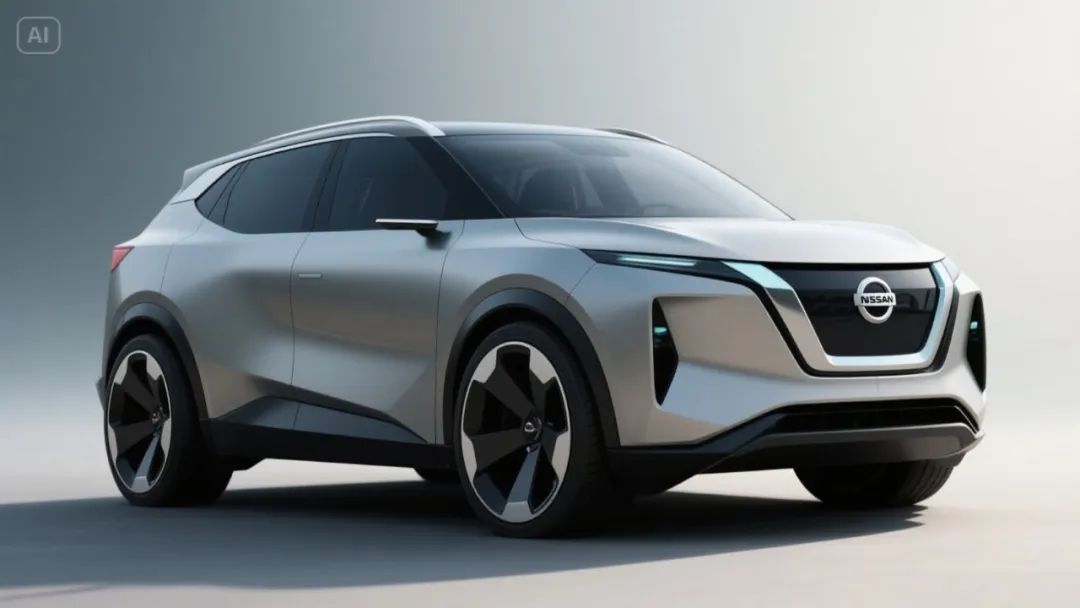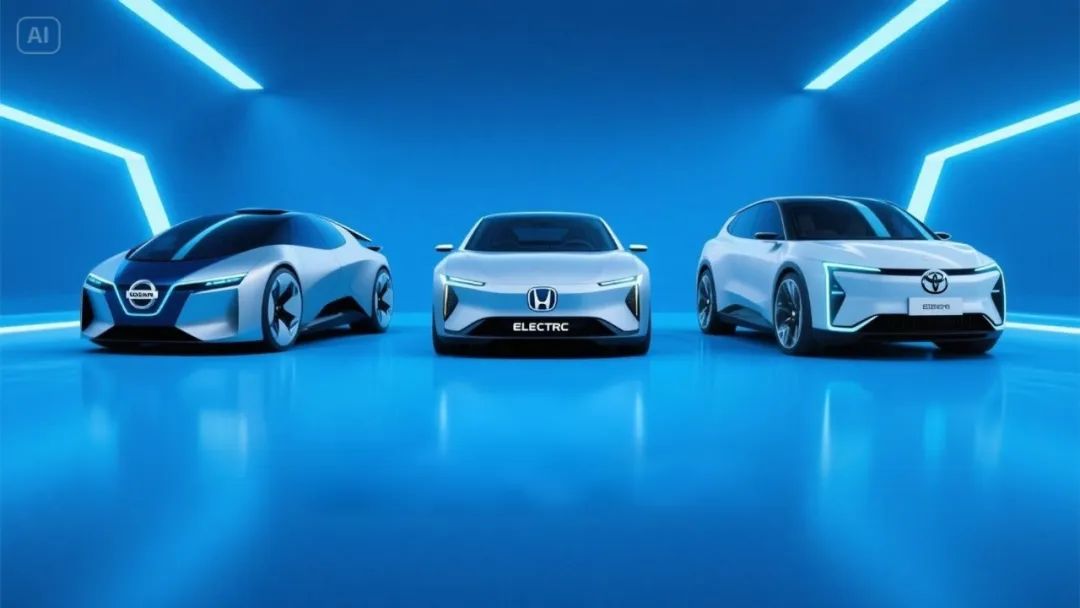Japanese Cars Refuse to Sit Idly by as the Market Shifts
![]() 05/22 2025
05/22 2025
![]() 555
555
Great Wall Motors Embarks on a New Venture
With annual sales surpassing 5 million units, China's largest automotive group, BYD, has emerged as a dominant force.
LeDao's New Leadership Ushers in a Wake-Up Call for Shen Fei
The automotive industry is undergoing a seismic reshuffle.
Over the past two years, Japanese automakers have faced unprecedented challenges in the Chinese market, with their market share consistently declining. April 2025 sales data further highlights the divergence among Japanese manufacturers: Toyota has temporarily stabilized its position through localized R&D and flexible pricing, while Honda and Nissan continue to struggle with their transformations.
In that month, Toyota sold 142,800 units in China, up 20.8% year-on-year; cumulative sales from January to April reached 530,200 units, a 7.7% increase year-on-year. In contrast, Honda sold only 44,000 units in April, a 40.82% year-on-year decline, with cumulative sales of 201,600 units in the first four months, a sharp 28.2% decrease year-on-year. Nissan sold 46,300 units in April, down 15.7% year-on-year, with cumulative sales of 167,600 units in the first four months, a 26.4% decrease. Additionally, brands like Mazda, Mitsubishi, and Subaru have seen their market shares continue to shrink, essentially distancing themselves from the mainstream.
Data indicates that the overall share of Japanese cars in the Chinese market has dropped from 23.1% in 2020 to around 18% in 2025. The market share of gasoline vehicles has shrunk from 35% to 22%, and the penetration rate of the new energy market is less than 5%, in stark contrast to the over 60% penetration rate of Chinese brands. Japanese cars, once dominant in the Chinese market, now find themselves struggling.

Amidst the explosive growth of China's new energy vehicle industry, Japanese automakers have been notably slow to adapt. Facing China's market shift towards new energy, Japanese automakers have been cautious and hesitant in embracing electrification. Due to uncertainties in future technological development paths, Japanese automakers have struggled to decisively allocate resources to electrification, unlike their Chinese counterparts.
In fact, even among Chinese automakers, with the exception of BYD, most maintained a cautious approach towards electrification in its early stages. It wasn't until 2022 that BYD definitively abandoned its gasoline vehicle business to fully focus on new energy vehicles.
China's rapid electrification process benefits from substantial market demand and potential. Relying solely on the Chinese domestic market, BYD has become the world's largest electric vehicle company and ranks fourth among global automotive groups. This achievement underscores the strong support of the Chinese market, an advantage that Japanese automakers find hard to replicate.
Japanese automakers, needing to balance their global market strategy, have been more cautious in their electrification decisions, hesitant to take bold steps. Taking Toyota as an example, for a long time, Toyota focused its R&D on hybrid and hydrogen fuel cell technology, being relatively conservative in its investment in pure electric vehicles, resulting in its electric product lineup lagging behind the rapid growth of market demand in China.
It's challenging to criticize German and Japanese automakers for their cautious decision-making; it's more a reflection of their industrial status.
Game theory introduces the "sailing ship theory," where industry leaders adopt a wait-and-see approach to maintain a leading edge. This strategy suggests that maintaining the status quo and keeping pace with competitors can sustain leadership without actively changing strategies.
In the global automotive landscape, Japanese and German automakers have long held leading positions, with Toyota and Volkswagen still firmly at the top of global sales.
From their perspective, when the technical direction is unclear, maintaining existing advantages and fully committing resources once the direction is certain seems logical. After all, only companies at a disadvantage, like early BYD and emerging new-energy vehicle makers, need to seek breakthroughs by boldly investing in new areas.
However, Japanese automakers severely underestimated the speed of electrification in China's automotive market. In just two or three years, China's new energy vehicle production and sales have surpassed gasoline vehicles' share. This rapid change caught Japanese and German automakers off guard, and before they could effectively respond, the market landscape had fundamentally transformed.
Two key factors drove this market transformation:
Firstly, joint venture brands underestimated the pace of China's electric vehicle infrastructure development. In a short period, China surpassed 10 million charging piles. By the end of June 2024, the total number of charging piles nationwide reached 10.244 million, a 54% increase year-on-year; among them, there were 3.122 million public charging piles and 7.122 million private ones, with a total rated power of public charging piles exceeding 110 million kilowatts, fully capable of meeting the charging needs of 24 million new energy vehicles.
Simultaneously, battery management and packaging technology have matured, significantly enhancing electric vehicles' range, a critical weakness. The trend towards electrification accelerated by at least three to five years earlier than anticipated.
Secondly, the explosive development of AI technology has profoundly reshaped the automotive industry. The advent of ChatGPT in 2022 sparked widespread interest in intelligence across society, accelerating the development of intelligent driving technology. As an extension of electric vehicles, intelligent driving is a natural limitation of traditional gasoline vehicles lacking large batteries.
Consequently, in both electrification and intelligence, traditional German and Japanese automakers were caught off guard. The core brand value on which gasoline vehicle era leaders relied is gradually eroding.
Against this backdrop, the pillars supporting brand value in the gasoline vehicle era have almost disappeared. The engine, once a key advantage of gasoline vehicles, is now obsolete, as are transmissions, and power is no longer a selling point. Without engine and transmission constraints, designs can be whimsical and impressive, and interior space can be vast. Apart from chassis tuning, which is difficult for consumers to perceive, the value system of gasoline vehicles has disintegrated.
Therefore, it's natural that Japanese automakers are retreating in China, facing the overwhelming tide of domestically produced new energy vehicles.

The notion that "once foreign auto giants exert their strength, Chinese automakers will falter" is exaggerated—Chinese automakers weren't completely defeated in the gasoline vehicle era. However, Chinese automakers are not without concerns. Crucially, what they're currently seizing is only the initiative, not a barrier. Barriers are hard to cross, but the initiative can be lost.
Whether it's battery-electric drive technology or intelligence, mature and comprehensive suppliers already exist in the market. On one hand, Chinese automakers don't have an absolute edge; on the other, the technology in leading areas hasn't formed a strong moat.
Japanese automakers refuse to sit idly by, so they've chosen to compete on price.
The significantly lower prices of Toyota's BZ4X and Nissan's Ariya N7 compared to previous joint venture new energy vehicles indicate that Japanese automakers are adjusting strategies to keep pace with China's market development. However, these products' market competitiveness—or sincerity—is still lacking. Toyota, Nissan, and Volkswagen are reluctant to abandon brand premium. Higher prices for similarly configured products and the use of niche suppliers at the same price point prove they haven't truly lowered themselves to compete on an equal footing with Chinese brands.
However, the laws of market development won't change due to automakers' wishes. The decline of Japanese and German automakers may only be a matter of time.
For automakers, such competition is undoubtedly fierce. Nonetheless, intense market competition directly benefits consumers—at least, gasoline vehicle prices have significantly dropped. As consumers, we all desire the price of a Wuling, the design of a Porsche, the reliability of a Toyota, the handling of a Citroen, the intelligent driving of a Tesla, the fuel efficiency of a BYD, the safety of a Volvo, the spaciousness of an Ideal, and the logo of a Rolls-Royce—all at once. Even if that's unattainable, is it too much to ask for both the price of a domestic car and the reliability of a Japanese one?
So, can transformed Toyota, Honda, and Nissan achieve this?









